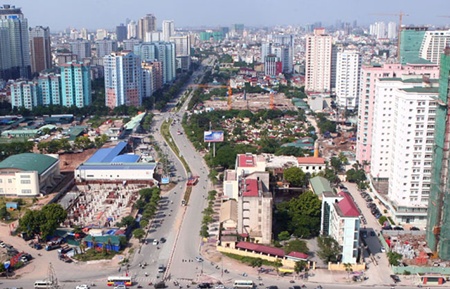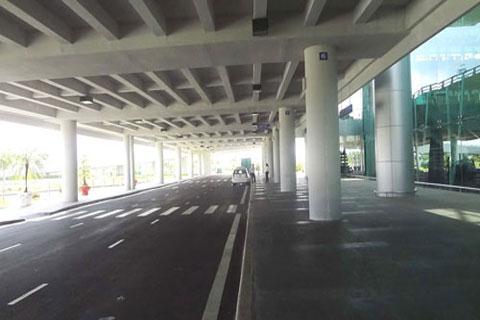Infrastructure problems listed
Infrastructure problems listed
A fundamental challenge for Viet Nam is to improve the affordability and efficiency of infrastructure investment, according to a report released by the World Bank.

The Assessment of Financing Framework for Municipal Infrastructure Report, which is a joint study carried out by the World Bank and the Finance Ministry with the financial support of AusAID, was released yesterday.
It highlighted key constraints, opportunities and options for enhancing government's access to financing for infrastructure development.
Accordingly, Viet Nam's transition to a market economy has been accompanied by rapid urbanisation and the annual economic growth that has averaged 7.3 per cent in the last two decades, resulting in a fivefold increase in the per capita income. The urbanisation had resulted in increased needs and investment in the field of infrastructure.
The country also pursued a path of fiscal decentralisation through greater autonomy for sub-national governments – provinces and cities – over public finances and infrastructure development.
The fragmentation of public infrastructure investment results in duplication and waste, and this is a major underlying cause of investment inefficiency, the report pointed out.
Within Viet Nam's highly decentralised administrative structure, individual provinces select and undertake their own infrastructure projects and compete with each other, while they lack predictability in the availability of funds for investment from year to year. These result in allocative inefficiency in the selection of projects and areas for investment. For instance, they rushed to develop major projects of airports and deep-sea ports.
Dang Duc Cuong of the World Bank Office in Ha Noi, who led the study team, noted that currently to develop infrastructure projects in provinces and cities nationwide, authorities mostly relied on the allocation of funds from the central Government, government bond issuance or the use of land for the creation of investment capital for the construction of infrastructure projects.
However, the central government was restructuring its public investment and tightening its budget. Additionally, the bond market in the country was largely underdeveloped with government bonds dominating the market and few local governments, including HCM City, Ha Noi, Da Nang, and Dong Nai, have accessed financing in the capital market through bond issues, he claimed.
"In the commercial banking sector, lending to sub-national governments has been very limited. Banks are reluctant to finance local governments and view lending for infrastructure as too risky," Cuong stated, adding that the repayment capacity of projects and borrowers was rarely considered because of the assumption of implicit guarantees by the local or central government.
The constraints were due to the absence of recourse mechanisms and limited capital base of banks and maturity mismatches between short-term deposits and the long-term financing needed for infrastructure development, he remarked.
As per the report's recommendations, Viet Nam needed to strengthen its enabling environment for municipal bond issuance through improving the overall regulatory framework and pilot ratings and financial management assessments for sub-national governments.
Moreover, the World Bank suggested a gradual development of a municipal development fund (MDF).
MDF is based on the successful examples of Finaciera de Desarrollo Territorial (FINDETER) in Colombia and Municipal Infrastructure Financing Company in the Czech Republic where these MDFs act as second-tier lenders, encouraging first-tier lenders (commercial banks) to lend to sub-national governments on a market-driven basis.
When a local government applies for a loan to a commercial bank, the bank conducts the appraisal based on the MDF guidelines. If approved, the commercial bank lends to the local government. The commercial bank is responsible for servicing the loan from the MDF and absorbs the full credit risks of loans given to the local governments.
Vice Minister of Finance Do Hoang Anh Tuan appreciated the MDF, stating that it would help the local government to have an additional capital mobilising channel to timely invest in urgent infrastructure, instead of awaiting for allocation from the State's budget.
However, he stressed that it was necessary to set up clearer mechanisms for capital mobilisation, lending, and recourse to ensure that the loans will be spent effectively and the local government could repay the loans.
He noted that the changed mechanisms must be accompanied by changing regulatory tools and now was the right time as Viet Nam was amending the Law on State's Budget and Public Investment Law.
vietnamnews




















